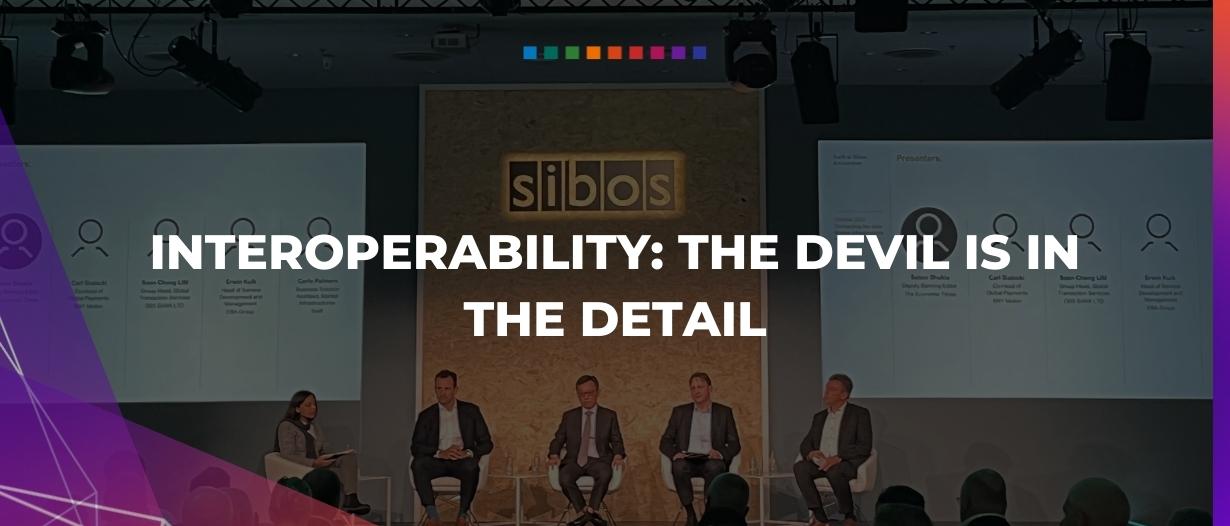Estimated reading time: 4 minutes
The world is run on transactions. And the world of transactions is changing.
The field of cross-border payments is a vast and multi-faceted area, posing multiple challenges for banks, corporates, and businesses daily. But with considerable nuances within the sector, it can be difficult for market players to reach a unanimously beneficial solution.
Many industry leaders can only reach an accord on the fact that international payments are often taxing in; cost, availability, and transparency.
Despite this divide, however, it seems that there has been a slow ubiquitous shift towards the same page.
Attending a Sibos panel session on interoperability, Trade Finance Global (TFG) heard more on the subject from; Carl Slabicki, managing director, co-head of global payments at BNY Mellon; Carlo Palmers, head of market infrastructures at SWIFT; Erwin Kulk, head of service development and management, EBA Clearing; Soon Chong Lim, group head, global transaction services, DBS BankGroup.
Transparent vs. opaque
Currently, the digital landscape is extremely siloed. What the industry needs is an active push towards interlinking existing digital islands.
There has been a sufficient amount of discourse around how this will practically play out.
A good start is addressing the rather anaemic existing database, and finding ways to expand the network, as information is integral to building a network that facilitates ‘frictionless’ trade.
Despite the desire for many companies to decentralise, practical hurdles remain.
For Lim, it is the current restrictive market infrastructure that proves the most challenging. Mostly, this is in reference to the fact that, to this day, 24/7 payment settlements are still not a common practice.
Standardisation

But how can this rather global and complex issue be remedied? According to this panel, there should be a push towards digital identity structures and standardisation to allow consumers and smaller businesses more accessibility.
This is all well and good when brought up in conversation, but the reality remains that standardising and compliance tend to inspire reticence in businesses.
In fact, a poll that took place at the session revealed that financial compliance was the largest source of concern for the audience.
This comes as a result of the varying operating rules and governances which inspire hesitation on a more general level, and also on a micro level when it comes to pre-validation and the mitigation of fraud risk.
These aforementioned challenges, of course, exclude the actual final settlement of the payment, which opens its own can of worms as a process.
Though the settlement of payments has proved to be a challenge, there is hope moving forward.
Use cases where payment hurdles are alleviated
Singapore and Thailand are ahead of the game in the payments sector.
In fact, these innovators have initiated the commercial use of QR scans to facilitate cross-border payments from buyer to merchant, meaning that there is transaction transparency end-to-end.
The vision here is to reduce the time taken for payments to be cleared.
QR scans are not only useful in this manner, in fact, there is a myriad of functions in which they could be integral. Notably, the visibility and speed that QR codes bring will be useful in creating a web of links, thereby slowly resolving the scarcity of data.
Low-value vs. high-value payments
High-value payments are a different kettle of fish compared to low-value payments.
High-value payments pertain to larger cross-border exchanges, with considerable sums of cash at the risk of fraud attacks.
In this environment, compliance frequently happens to be a buzzword, often in a bid to raise the conversation around best practices to mitigate money laundering. It was noted during the Sibos session that improving governance and compliance could help lessen the rate of payment failures during the validation process.
In these cases, the panellists cited that the biggest mitigator of this risk is pre-validation. And although the pre-transaction step is important, there was an emphasis placed on inflight transaction handling needing to be porous as well.
For low-value transactions (sub $1000 transactions) there is less degree of risk. But other questions arise, such as; how does the business displace cash at such high interchange rates, how to deal with the lack of availability of clearing on the weekends, what are the dispute resolution processes, what is the protocol when a payment fails and who gets involved?





























